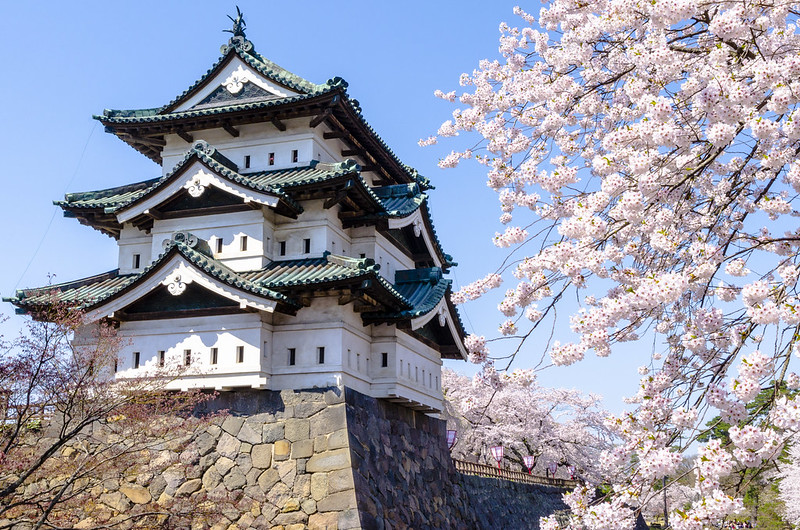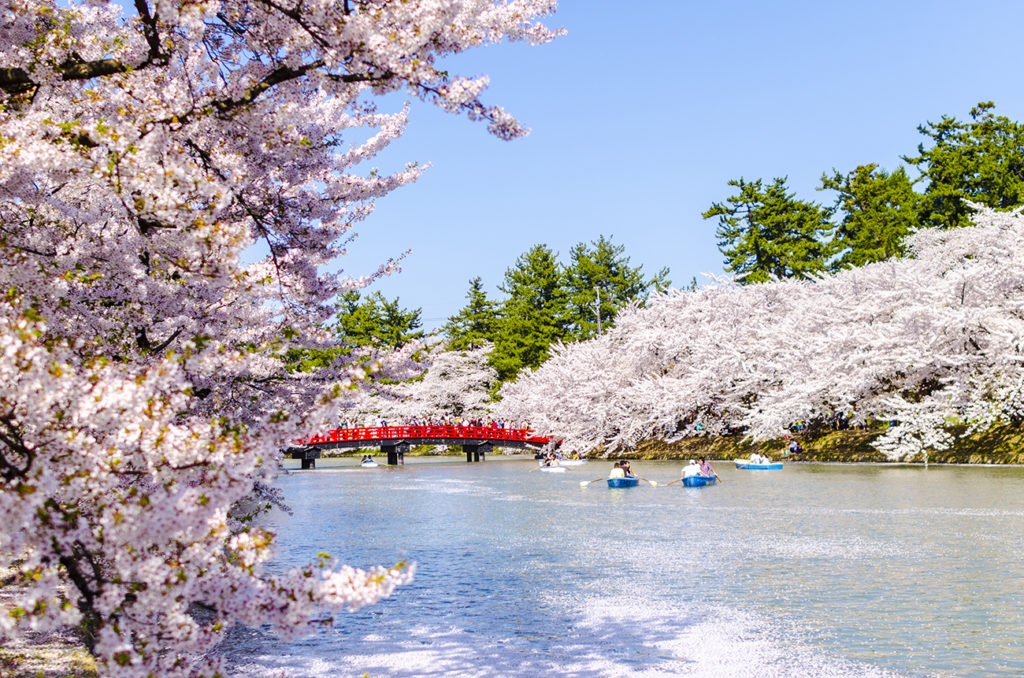
The Historic Hirosaki Castle
Japanese castles were an important part of Japan’s history. They exemplify Japanese architecture and strategic planning. Japanese castles served as military defenses and were strategically placed in trading routes, rivers, and roads. They were also the center of governance in Japanese states. When the central government’s authority began to weaken sometime in the 15th century, Japan entered the chaotic regime of the warring states. These independent states fought each other continuously. The ruling lord (daimyo) of each independent state built his own castle that stood on grounds with a vantage point, such as on top of mountains, in case they were suddenly attacked.
Beautiful Hirosaki Park – Cherry Blossom Festival.
After the 1590 Battle of Odawara, during the Sengoku period, Ōura Tamenobu fought valiantly for Toyotomi Hideyoshi against one of the most powerful warrior clans in Japan, the Hojo clan. For his efforts, he was awarded 45,000 koku. (Koku was originally defined as a quantity of rice and was historically defined as enough rice to feed one person for one year: a koku of rice weighed about 150 kilograms.) Ōura Tamenobu then took the name of Tsugaru. During the Battle of Sekigahara, Tsugaru fought for Tokugawa Ieyasu and was subsequently formally named as the lord of Hirosaki Domain with his koku increasing to 47,000.
Tsugaru began work on Hirosaki Castle in 1603, but construction came to a standstill upon his death the year after. His successor Tsugaru Nobuhira resumed building the castle in 1609 and completed it in 1611. In 1627, the 6-story, 5-roof main keep was struck by lightning, and as the fire reached the place that stored gunpowder the whole area exploded. It was only in 1810 that the main keep was rebuilt by the 9th daimyō Tsugaru Yasuchika into the more modest yet equally magnificent 3-story structure.
Cherry blossoms at Hirosaki Castle Park.
When the Han system was abolished, the Tsugaru clan surrendered Hirosaki Castle to the new Meiji government. Hirosaki Castle became a garrison for the Imperial Japanese Army in 1871 and a martial arts school in 1873.
The properties surrounding Hirosaki Castle were donated by the Tsugaru clan to the government to turn into a park that was opened to the public in 1898. Much of the bronze in the castle such as the roof tiles and other decorations was stripped away during World War II, but in 1950 under the cultural properties protections system, all except for 2 surviving structures in the castle were named National Important Cultural Properties. After its restoration in 1953, the East Gate of the 3rd Bailey was also designated as a historic site.
There are numerous cherry trees planted all around the Hirosaki Castle. The spectacular sight draws numerous visitors each year during the cherry blossom season.


